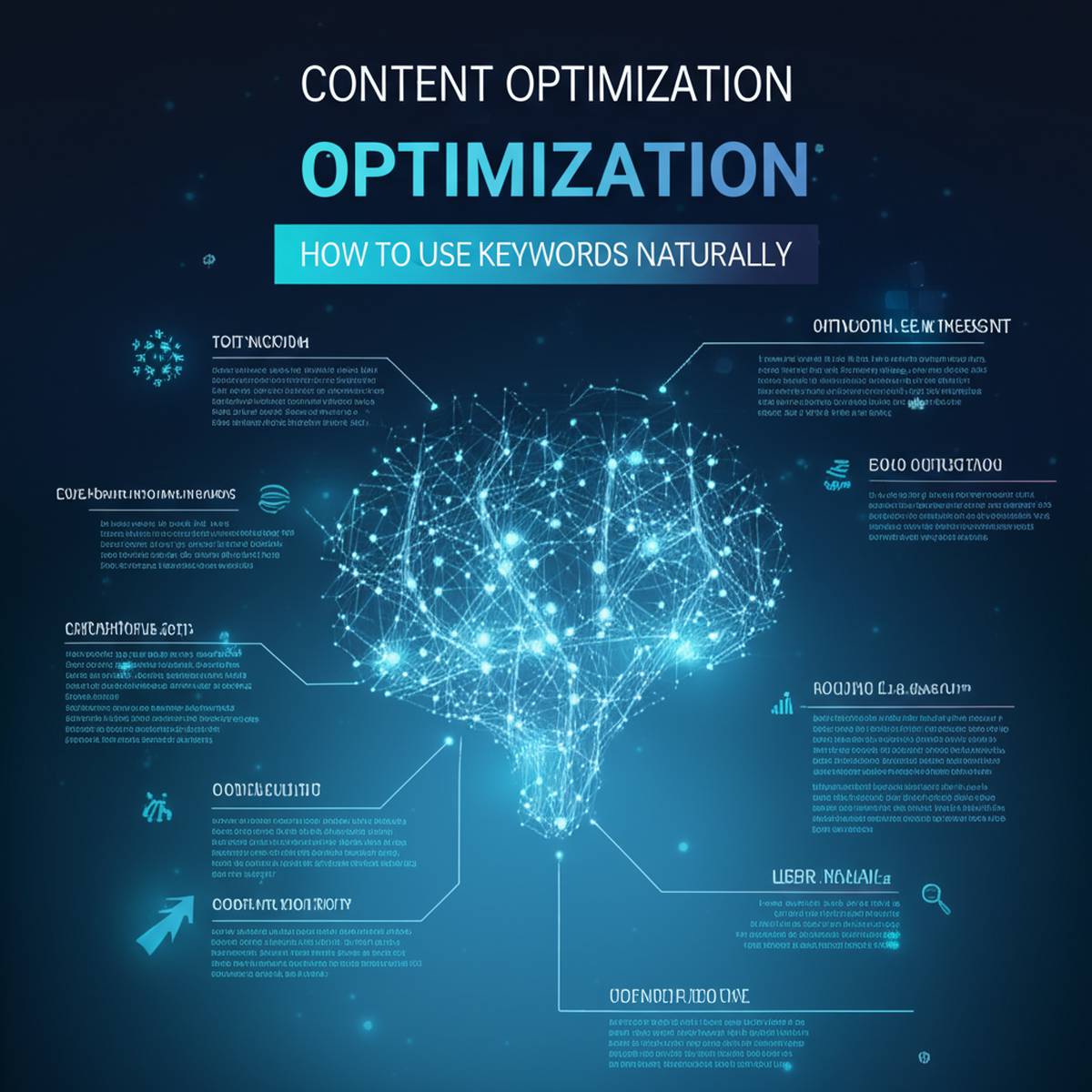In today’s competitive digital landscape, mastering content optimization has become the cornerstone of successful online marketing. While many content creators understand the importance of keywords, the real challenge lies in integrating them naturally without falling into the trap of keyword stuffing. This comprehensive guide will teach you how to achieve perfect content optimization by using keywords strategically while maintaining readability and user experience.
Understanding Keywords and Their Role in Content Optimization
What Are Keywords in Content Optimization?
Keywords are the foundation of content optimization, serving as the bridge between what users search for and the content you create. In the context of content optimization, keywords represent the specific terms and phrases your target audience uses when looking for information, products, or services related to your business.
Why Keywords Are Critical for Content Optimization Success
Effective content optimization relies heavily on strategic keyword usage because search engines use these terms to understand your content’s relevance and purpose. When you optimize content properly, you’re essentially communicating with search algorithms in their language, helping them categorize and rank your content appropriately.
Well-optimized content with natural keyword integration can:
- Improve search engine rankings significantly
- Attract highly targeted organic traffic
- Increase user engagement and dwell time
- Enhance overall content strategy effectiveness
- Build topical authority in your niche
Types of Keywords for Content Optimization
Short-tail Keywords (Head Terms) These are broad, high-volume search terms typically consisting of 1-2 words. While they offer massive search potential, they come with intense competition and often lack specific user intent.
Long-tail Keywords These longer, more specific phrases (3+ words) are goldmines for content optimization. They typically have lower search volume but higher conversion rates and clearer user intent, making them easier to rank for and more valuable for targeted traffic.
LSI (Latent Semantic Indexing) Keywords These semantically related terms help search engines understand your content’s context better. LSI keywords are crucial for modern content optimization as they support Google’s sophisticated understanding of topic relationships and user intent.
Step 1: Comprehensive Keyword Research for Natural Integration
Understanding Your Audience and Search Intent
Successful content optimization begins with deep audience understanding. Before selecting keywords, analyze the different types of search intent:
- Informational Intent: Users seeking knowledge or answers
- Commercial Intent: Users comparing options before purchasing
- Transactional Intent: Users ready to take action or make a purchase
- Navigational Intent: Users looking for specific websites or pages
Best Tools for Content Optimization Keyword Research
Google Keyword Planner This free tool provides valuable insights into search volumes, competition levels, and related keyword suggestions that can enhance your content optimization strategy.
Advanced SEO Tools Professional tools like Ahrefs, SEMrush, and Ubersuggest offer deeper insights into keyword difficulty, competitor analysis, and content gap opportunities.
Google Search Console This invaluable resource shows which keywords already drive traffic to your content, helping you identify optimization opportunities and content expansion possibilities.
Competitor Analysis Analyzing successful competitors reveals keyword opportunities and content optimization strategies that work in your industry.
To extract keywords from content effectively and identify the most relevant terms for your optimization efforts, consider using specialized keyword extraction tools that can analyze existing high-performing content in your niche.
Finding Keyword Variations and Synonyms
Effective content optimization requires keyword diversity. Using variations and synonyms makes your content appear more natural while expanding your reach across different search queries. This approach prevents over-optimization while maintaining topical relevance.
Strategic Keyword Placement for Natural Content Optimization
Title Tags and Meta Descriptions
Your title tag is the first impression users have of your content. Place your primary keyword naturally at the beginning of your title while ensuring it remains compelling and click-worthy. The meta description should include your main keyword and related terms while providing a clear value proposition that encourages clicks.
URL Structure Optimization
Create clean, descriptive URLs that include your primary keyword. Short, keyword-rich URLs not only help with content optimization but also improve user experience and click-through rates from search results.
Headers and Subheadings (H1, H2, H3)
Your H1 tag should contain your primary keyword and clearly communicate your content’s main topic. Use H2 and H3 tags strategically to incorporate secondary keywords and create a logical content hierarchy that both users and search engines can easily follow.
Introduction and Conclusion Optimization
Include your primary keyword naturally within the first 100-150 words of your content. This early placement signals relevance to search engines while setting clear expectations for readers. Mirror this approach in your conclusion by reinforcing your main topic and related keywords.
Body Content Integration
Throughout your main content, focus on natural keyword integration that enhances rather than interrupts the reader’s experience. Aim for keyword density between 0.5% and 2.5%, but prioritize context and readability over exact percentages.
Image Alt Text and Media Optimization
Optimize image alt text with relevant keywords to improve accessibility and provide additional ranking signals. This aspect of content optimization is often overlooked but contributes significantly to overall SEO performance.
Internal and External Linking Strategy
Use keyword-rich anchor text for internal links to strengthen your site’s topical authority. External links to authoritative sources with relevant anchor text can also enhance your content’s credibility and ranking potential.
Mastering Natural Keyword Integration: Best Practices
Write for Humans First, Search Engines Second
The most effective content optimization strategy prioritizes user experience over search engine manipulation. Create content that genuinely helps your audience, then optimize it for search engines as a secondary consideration.
Smart Use of Keyword Variations and LSI Terms
Incorporate related terms and synonyms throughout your content to create semantic richness. This approach supports modern search algorithms’ understanding of context while making your content more comprehensive and valuable.
Always Prioritize User Intent
Successful content optimization requires alignment between your keywords and user intent. Ensure your content thoroughly addresses the questions and needs behind your target search terms.
Focus on Quality and Comprehensive Coverage
High-quality, comprehensive content naturally attracts backlinks and social shares, which are crucial ranking factors. Invest time in creating in-depth resources that become go-to references in your field.
Leverage Long-tail Keywords for Targeted Traffic
Long-tail keywords are excellent for content optimization because they typically have clearer intent and less competition. They also tend to convert better because they represent more specific user needs.
Maintain Natural Keyword Density
While keyword density isn’t as critical as it once was, maintaining a natural distribution of your target terms throughout your content remains important. Focus on context and readability rather than hitting specific percentage targets.
Read Your Content Aloud
This simple practice helps identify unnatural keyword placement and awkward phrasing that might harm user experience. If something sounds forced when spoken, it needs revision.
Continuous Editing and Improvement
Content optimization is an ongoing process. Regularly review and update your content based on performance data and changing search trends to maintain and improve rankings.
Common Keyword Mistakes That Harm Content Optimization
Keyword Stuffing: The Ultimate SEO Sin
Keyword stuffing involves unnaturally cramming keywords into content, which creates a poor user experience and can result in search engine penalties. Modern algorithms easily detect this practice and may significantly reduce your content’s visibility.
Ignoring User Intent
Creating content that includes the right keywords but fails to satisfy user intent is a common optimization mistake. Search engines prioritize content that genuinely helps users, regardless of keyword presence.
Over-Reliance on Exact Match Keywords
Focusing solely on exact keyword matches while ignoring synonyms and related terms limits your content’s reach and appears unnatural to both users and search engines.
Sacrificing Content Quality for Keyword Quantity
Never compromise content quality for the sake of including more keywords. High-quality, helpful content with fewer keywords will always outperform low-quality content stuffed with keywords.
Essential Tools for Content Optimization Success
Google Keyword Planner: Free keyword research and search volume data Ahrefs: Comprehensive SEO toolkit for keyword research and competitor analysis SEMrush: All-in-one digital marketing platform with advanced content optimization features Yoast SEO / Rank Math: WordPress plugins that provide real-time content optimization guidance Google Search Console: Free tool for monitoring keyword performance and identifying optimization opportunities
Monitoring and Adjusting Your Content Optimization Strategy
Using Analytics for Content Performance Tracking
Google Analytics and Google Search Console provide crucial insights into your content optimization success. Monitor organic traffic, keyword rankings, user engagement metrics, and conversion rates to understand what’s working and what needs improvement.
Staying Current with Algorithm Changes
Search engine algorithms continuously evolve, making it essential to stay updated with best practices for content optimization. Follow reputable SEO news sources and adjust your strategy based on confirmed algorithm updates.
Regular Content Audits and Updates
Periodically review your content’s performance and update it with fresh information, new keywords, and improved optimization. This practice helps maintain rankings and can often boost performance significantly.
The Art and Science of Natural Keyword Optimization
Successful content optimization combines technical SEO knowledge with creative writing skills. The goal is creating content that serves users while satisfying search engine requirements. This balance requires practice, patience, and continuous learning.
Remember that the most effective on-page SEO strategies focus on providing genuine value to users. When you create content that truly helps people while incorporating keywords naturally, you’re following the most sustainable and effective content strategy possible.
Effective content optimization isn’t about gaming search engines—it’s about creating the best possible resource for your target audience while making it easy for search engines to understand and rank your content appropriately.
Frequently Asked Questions
How does keyword density affect content optimization? Keyword density should be natural rather than forced. Aim for 0.5-2.5% density, but focus more on context and user experience than exact percentages.
What’s the best approach for on-page SEO keyword placement? Place your primary keyword in the title, first paragraph, at least one heading, and naturally throughout the content. Avoid over-optimization by maintaining readability.
How can I improve my content strategy with better keyword usage? Develop a comprehensive keyword strategy that includes primary terms, long-tail variations, and LSI keywords. Create content clusters around related topics to build topical authority.
Should I optimize old content with new keywords? Yes, updating existing content with relevant keywords and fresh information can significantly improve performance. This is often more effective than creating entirely new content.
How do I know if my content optimization is working? Monitor organic traffic, keyword rankings, user engagement metrics, and conversion rates through Google Analytics and Search Console. Look for sustained improvements over 3-6 months.

